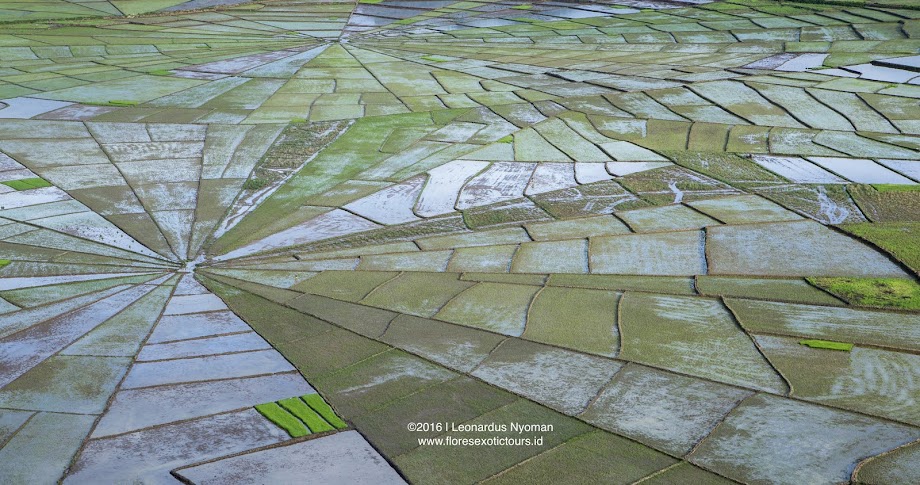Liang Woja Limestone Cave
 | |
| Cave entrance - Liang Woja |
 |
| stalagtic and stalagmite in the cave |
 |
| Cave interior with stalagtic and stalagmite |
 |
| Cave interior with stalagtic and stalagmite |
 |
| Cave interior with stalagtic and stalagmite |
Liang Woja limestone cave is set within an impressive prominent rock formation along the river side and rice terraces near Golo village in Cibal sub-district.
The name came from the local Language: Liang means Cave and Woja means Rice/Paddy. Liang Woja is the rice storage cave, or the name might have been Liang Woja because of the rice fields near the cave.
This is one of the rarely visited caves which are not as famous as Liang Bua cave in Manggarai regency.
Liang Woja lies in a fantastic natural environment with an excellent panoramic view over the rice fields, mountain hills and river side.
Mother Mary statue in the cave has made this place as pilgrimage site for the local villagers and people from other places in Cibal sub-district, while the formation of stalactite and stalagmite formations are the most attractive side of the cave.
How to get there
Located in Golo village, Cibal sub-district, about 25 kilometers from Ruteng, the capital city of Manggarai regency. a visit to Liang Woja makes a pleasant day trip.
You can take a motor bike or private car by taking Ruteng – Reo route to the north. Once you arrive in Pagal, you have to take the road to Beamese, via Tungku village. Another option would be via Tengku Tok, some 13 km from Ruteng, where you take the road to Wudi, continue to Rakas, Welu, Rangat and Pinggang village. You will enjoy beautiful panorama along the way to get there and meet friendly local people.
The name came from the local Language: Liang means Cave and Woja means Rice/Paddy. Liang Woja is the rice storage cave, or the name might have been Liang Woja because of the rice fields near the cave.
This is one of the rarely visited caves which are not as famous as Liang Bua cave in Manggarai regency.
Liang Woja lies in a fantastic natural environment with an excellent panoramic view over the rice fields, mountain hills and river side.
Mother Mary statue in the cave has made this place as pilgrimage site for the local villagers and people from other places in Cibal sub-district, while the formation of stalactite and stalagmite formations are the most attractive side of the cave.
How to get there
Located in Golo village, Cibal sub-district, about 25 kilometers from Ruteng, the capital city of Manggarai regency. a visit to Liang Woja makes a pleasant day trip.
You can take a motor bike or private car by taking Ruteng – Reo route to the north. Once you arrive in Pagal, you have to take the road to Beamese, via Tungku village. Another option would be via Tengku Tok, some 13 km from Ruteng, where you take the road to Wudi, continue to Rakas, Welu, Rangat and Pinggang village. You will enjoy beautiful panorama along the way to get there and meet friendly local people.
For more info, please contact ;
website : http://floresexotictours.id
e-mail : info@floresexotictours.id






